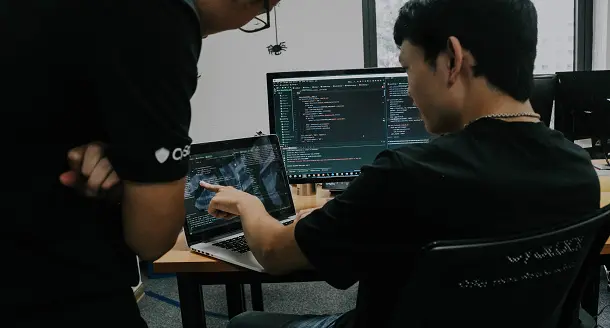Technology has brought about many advantages in education, including 24/7 access to educational resources, increased flexibility and collaboration among students, and the ability to learn at a student’s own pace. Technology can also be used to enhance classroom sessions, as hybrid versions of learning combine technology with in-person sessions. Teachers can also design lessons that fit student interests and allow students to complete them at their own pace. Online activities also allow teachers to observe student struggles and adjust their teaching style based on their needs.
Collaboration:
Collaboration is one of the benefits of using technology in education. Traditionally, students may have created notes and posters, but with the help of technology, they can produce digital collections of research. Students can even write and draw together in the same program. They can also share ideas with each other and create full collaborative documents. This can lead to increased long-term information retention. A few of the best examples of technology-driven collaboration in education include video collaboration, social media, and virtual reality.
Collaboration allows students to work towards a common goal while working toward individual progress. The ability to self-manage accountability encourages pupils to appreciate others and use differences to their advantage. Because co-operation involves inherent interdependence, roles and responsibilities are clearly defined but flexible. The process of collaboration is highly accountable. In order to make the most of this educational benefit, educators must carefully plan and implement the methods that will best facilitate collaboration among their students.
Learning at a student’s own pace:
The benefits of technology in education include the ability for students to learn at their own pace. Online collaboration tools allow students to share documents and collaborate outside of the classroom. Teachers can assign projects and let students interact with their peers to clarify their understanding. Students can also ask questions and give suggestions while using a collaborative online document management system like Google Drive. In addition, students can collaborate with each other on projects outside of the classroom using Google Suite.
The benefits of technology in education go beyond improving student outcomes. They can improve the quality of education and deliver standardized quality content at scale. For example, technology in education can improve the efficiency of teacher-led classrooms and facilitate learning at a student’s own pace. However, technology in education can be a hazard if it is not used appropriately. Educators must be cautious and educate parents about the risks of using technology in education.
Access to a variety of programs and information:
The use of technology in education can enhance individual learning and remove educational boundaries. For example, educators can use cloud-based learning software, mobile apps, blogs, discussion boards, and digital whiteboards to support their instruction. Teachers can also use technology to change traditional teaching methods, such as flipping the classroom, where students watch instructional videos in class, complete their homework at home, and then participate in-class activities.
Technology has also enabled learners in remote areas to access education. For example, Johnston and Ksoll (2017) studied a Ghanaian program that broadcast live instruction through satellite. Students in grades 2 through 4 were connected to a television studio in Accra, Ghana. The students improved their numeracy scores and performance on foundational literacy tasks. The study also evaluated the impact of the program on classroom attendance and time spent on instruction.
Encouragement of individual learning:
Another benefit of technology in education is its ability to support the concept of differentiation. DI is the process of tailoring learning materials and instruction to meet the learning needs of every individual. The International Congress on School Effectiveness and Improvement found that the practice of DI is highly effective. Using educational software to improve classroom teaching is an excellent way to support individual learning. But technology alone can’t provide the necessary tools for differentiation.
Moreover, it promotes collaboration among students, resulting in greater independence and autonomy. As a result, technology also enables students to teach and tutor each other. In this way, they can develop skills necessary for lifelong learning. They also develop digital literacy and practice digital citizenship, as well as improve their ability to stay organized, solve complex problems, and increase their productivity. By facilitating collaborative learning through technology, educators can effectively use this advantage to improve student performance and achievement.
Helping struggling or disabled students:
There are a number of low-cost and free tools available to help struggling or disabled students engage in the course content. While teachers strive to provide equal opportunities for all students, children with disabilities sometimes face barriers to participation in the classroom. With assistive technology, teachers can help these students participate in the classroom naturally. Adaptive technology is available to help students with a wide range of disabilities complete assignments and projects.
Some of the best technology for students with disabilities allows teachers to differentiate instruction and add additional help and resources for their students. Students with disabilities often have difficulty processing language and expressing themselves. Wireless keyboards and mouse clicks allow these students to input text or images from a distance. Most wireless devices accommodate visual impairments, but some can make communication difficult. Augmented and alternative communication uses symbols and pictures to communicate with students with disabilities.
Author Bio: Miguel Gabriel is a research-based content writer. He has worked in various industries, including healthcare, technology, and finance. He is currently working as a writer in Research Prospect famous for dissertation writing services and Report writing services. When Miguel is not writing or researching, he enjoys spending time with his family and friends. He also loves travelling and learning about new cultures.

